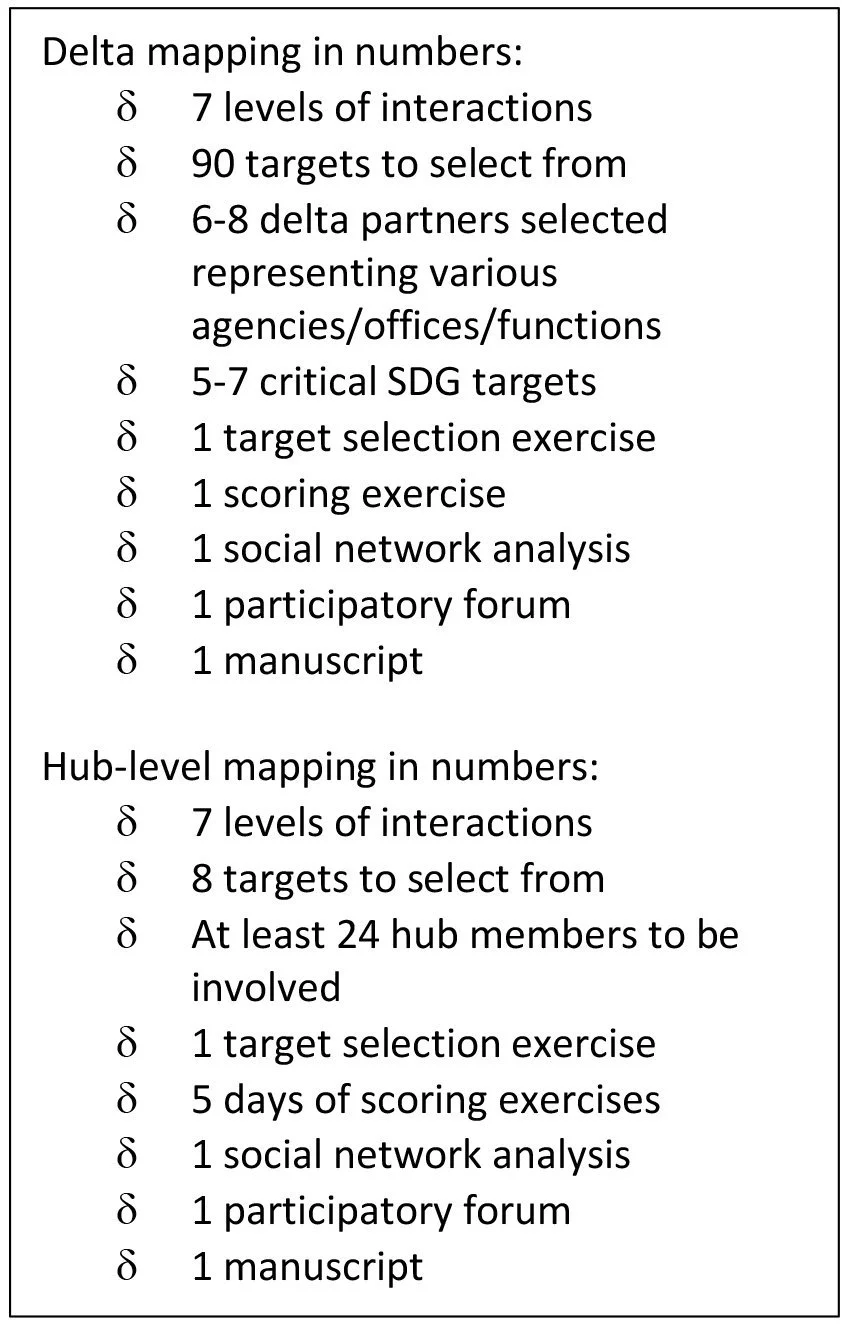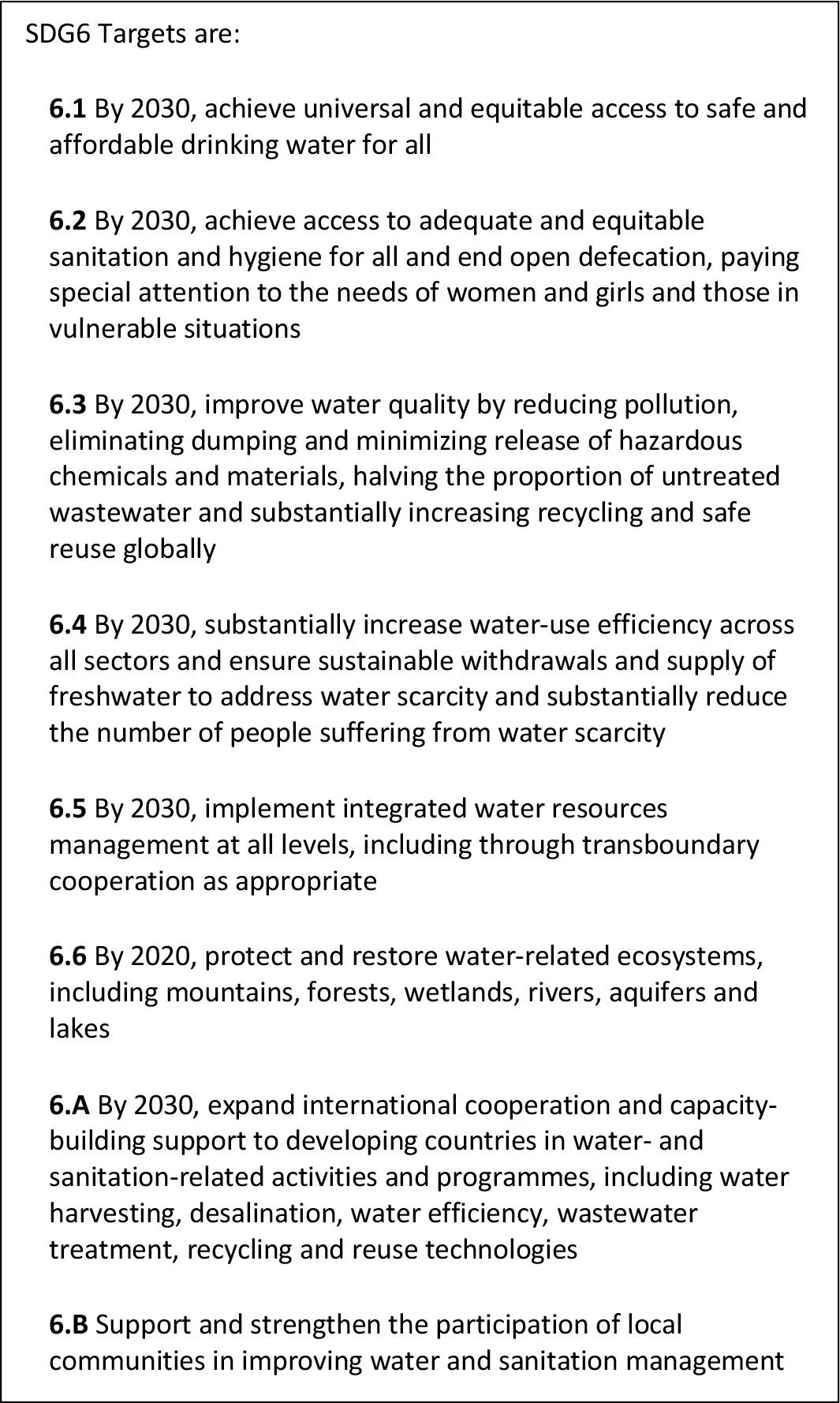Mapping SDG Interlinkages for Policy Coherence: Designs & Plans of the SDG Interlinkages sub-group
Authors: Albert Salamanca, Vo Thanh Son & Minh Tran
In Asia’s mega-deltas, coherent policies and strategies are crucial to achieve the sustainable development goals of the UN’s Agenda 2030 (SDGs). Ensuring coherence entails understanding how SDG targets interact. Delta actors can make the most use of resources if they understand which among the targets could aid or impede the implementation of others. Policy dialogues and learning processes can help these stakeholders aware of who they should cooperate and negotiate with in implementing priority targets. In addition, it will also bring out policy incoherence. Thinking through the links between targets helps actors place where the overlaps or lacks of harmony would be and their impacts on delta sustainability.
Interactions analysis, however, can be complex. For example, there are 17 SDGs, 169 targets and 232 unique indicators. A set of nine targets involves 72 interactions, 25 targets 600 interactions, and 100 targets 9,900 interactions. Teasing out these interactions calls for considerable time investment. Studying 1122 interactions among 34 targets will take nearly 20 days of work. Thus, a framework for mapping SDG interlinkages is needed. It must also be fine-tuned to the realities of the deltas and the current pandemic situation, where travel is restricted and delta stakeholders may be responding to COVID-19-related concerns.
The SDG Interlinkages Sub-Group will work with delta stakeholders and Hub members to map interactions. We will analyse how different priority targets interact and demonstrate how coherent SDGs implementation can promote delta sustainability. As a pilot, we first focus on the Mekong Delta. The Sub-Group has selected An Giang, Can Tho, and Ca Mau provinces, representing the high-flooded, freshwater, and saline intrusion zones respectively to test our tools. As we apply and refine our approach to SDG interlinkage mapping, we will also roll out workshops in the Red River Delta as well as the Ganges-Brahmaputra-Meghna delta in India and Bangladesh.
Box 1 (below) shows the various outputs of the SDG Interlinkages Sub-Group:
Box 1. The SDG interlinkages sub-group work by the numbers
Through a facilitated process, delta stakeholders and Hub members will be able to define the nature of target interactions. Understanding trade-offs and synergies between targets can highlight the costs, benefits or opportunities of decisions. This means spotting both “accelerator interventions” and critical clashes, in order to make sure that resources are given to targets that sow the seeds for more impacts. In so doing, delta stakeholders prioritise which among the targets to pursue given limited time, resources, and political support and Hub members are aware which among the targets within a particular SDG or across other SDGs are critical.
In doing these analyses at the delta and hub levels, we will achieve the following:
Gained insights into how SDG targets interact at delta scale;
Generated ideas on how to support inter-agency dialogue, learning, and coordination among delta stakeholders; and,
Produced insights on synergies and risks that can support or hinder policy coherence.
In 2021, the sub-group will lead activities to scope, select and score targets in the delta and the hub. The starting point for target selection in the delta will be a list of SDG targets prioritized by either the Vietnamese national government or provincial governments of the selected provinces in the Mekong Delta. For the Hub analysis, we will focus on SDG6 as this is also the priority of the Vietnamese government for the Mekong Delta (see Box 2 for list of SDG 6 targets).
After these steps, we will use cross-impact matrices to show the interactions of various targets. We will then run social network analysis of the mean scores to identify patterns and clusters of interacting targets and other network effects. Using an SNA software, the cross-impact matrix is translated into a network showing the links between all targets, their direction, and strength. Critical nodes that arise will be explained.
Outcomes of these analyses will feed into policy briefs and the conduct of participatory fora in collaboration with WP6. We will also produce manuscripts of this work.
Box 2 for list of SDG 6 targets



